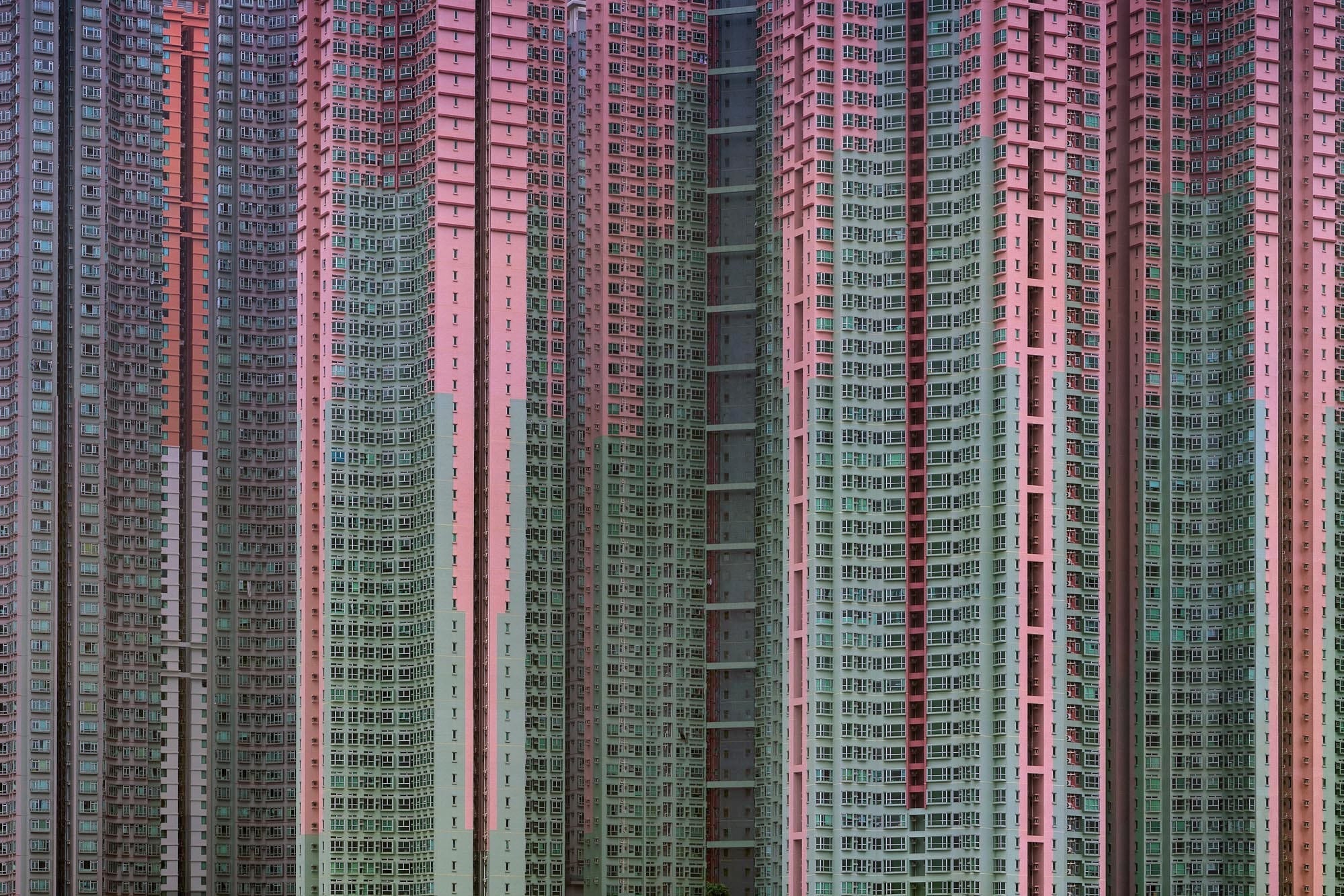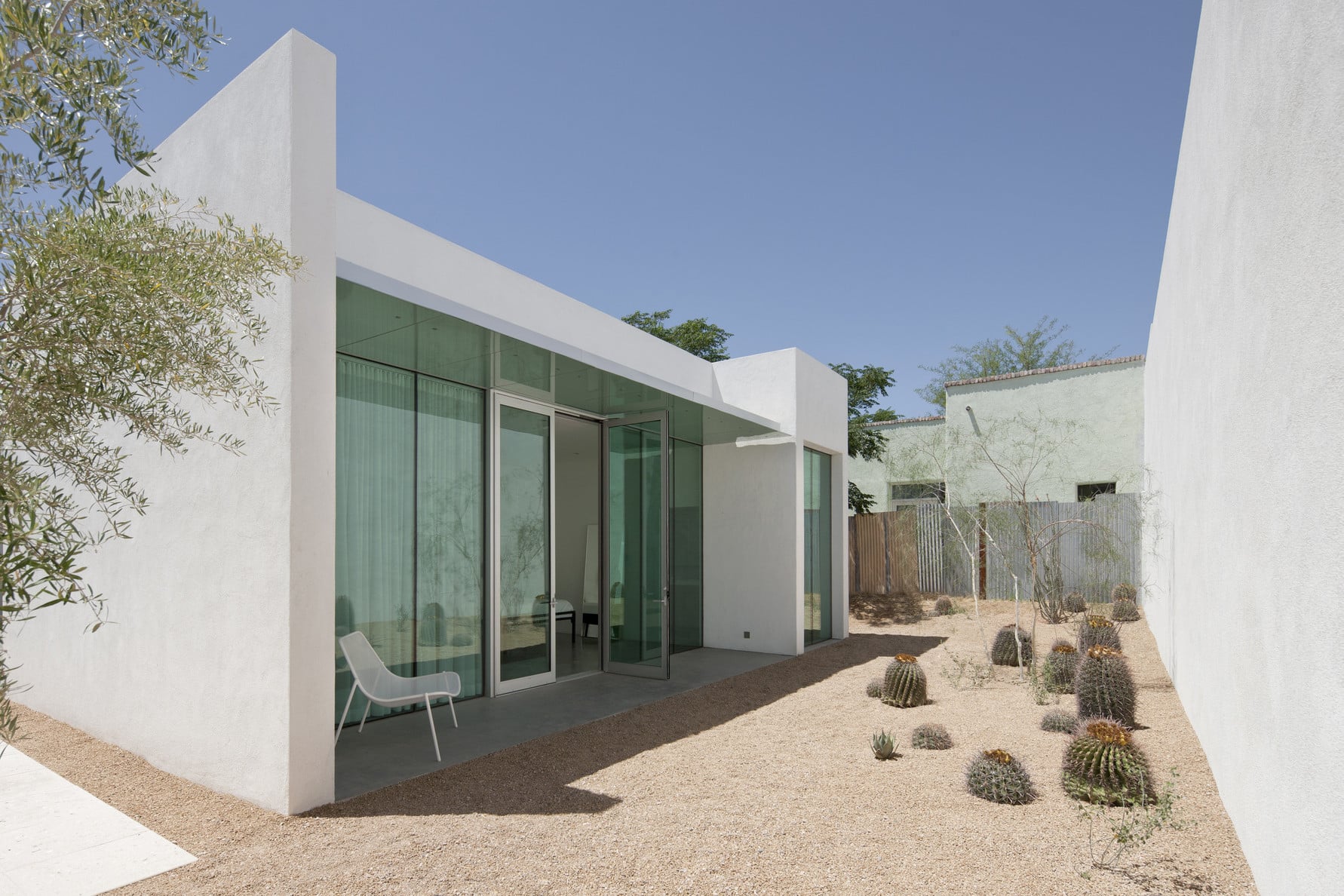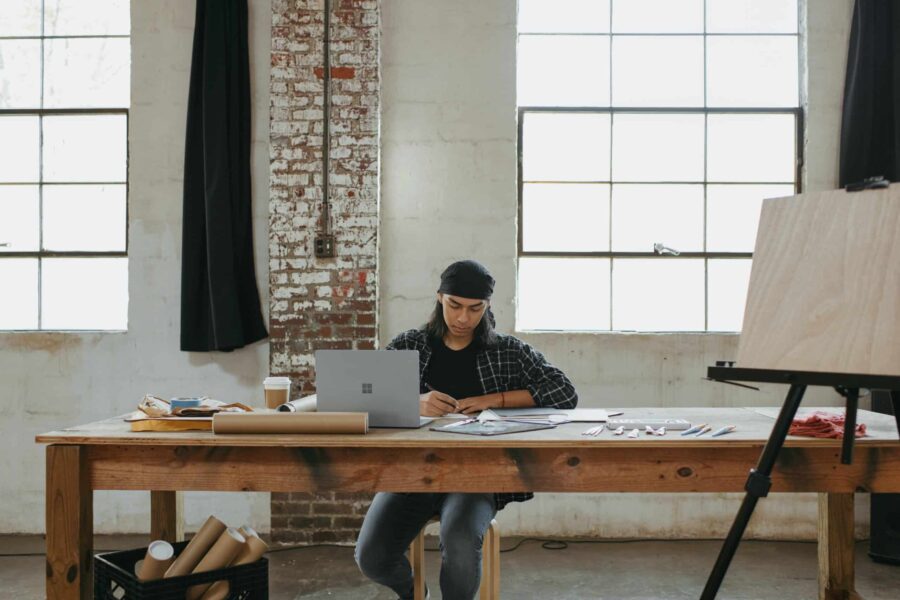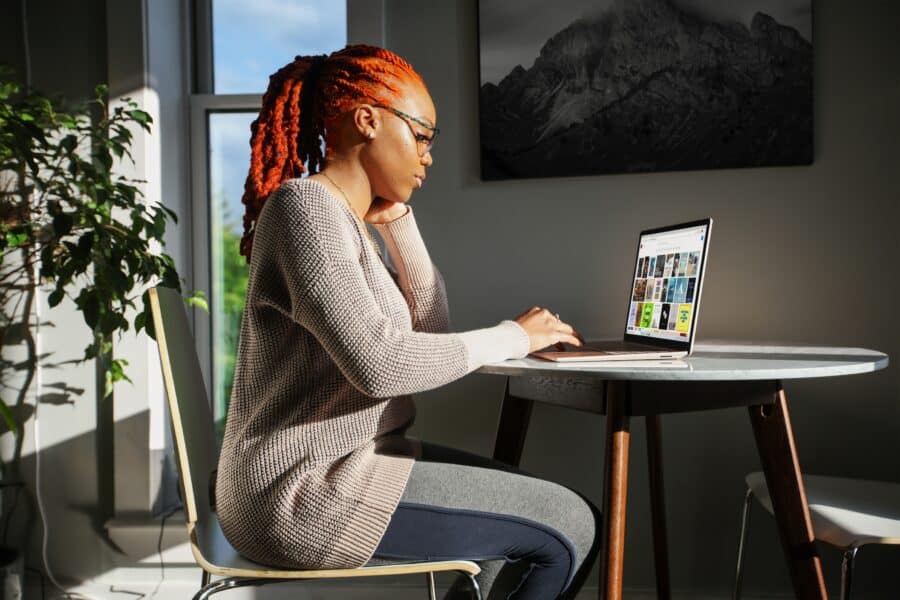Photographing the intensity and expanse of urban landscapes beyond a stock image skyline is difficult. It’s helpful to get landscape photography tips from an expert. Capturing the megacity experience is usually limited to either street-level photography or aerial perspectives. But not for Hong Kong-based photographer Michael Wolf, whose intimate, visceral photos of high-rise buildings shed light on these vast structures and the lives of their inhabitants.
In his series Architecture of Density, Transparent City, and Paris Rooftops, Wolf’s photos of Hong Kong, Chicago, and Paris are a metaphor for the reality of thousands of humans existing in such close proximity.
We got the chance to talk to Wolf about his experiences shooting some of the world’s densest urban landscapes. His tips on getting access, finding the right light, and letting your vision drive your practice just might make the difference between something you snapped on your way home from the office and an urban landscape that lives and breathes.
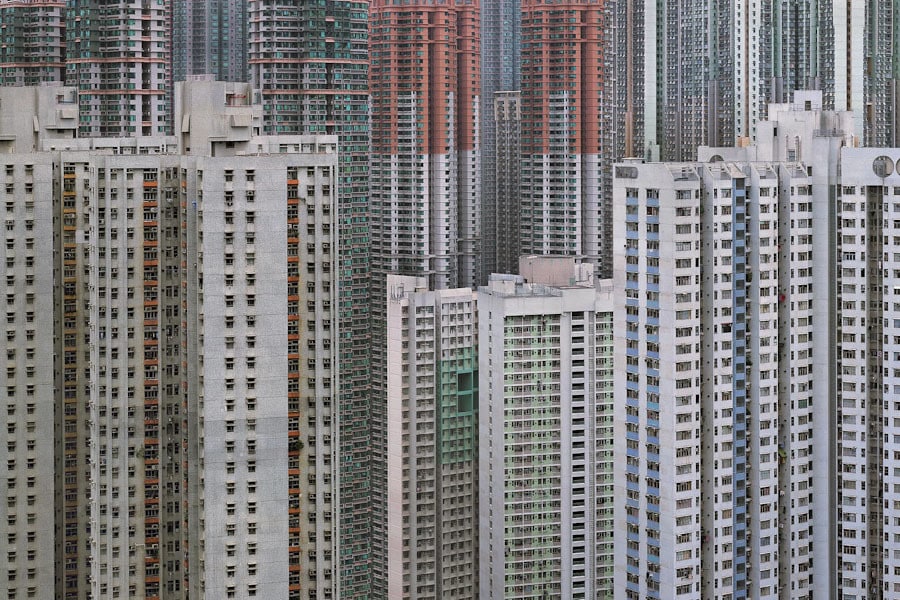
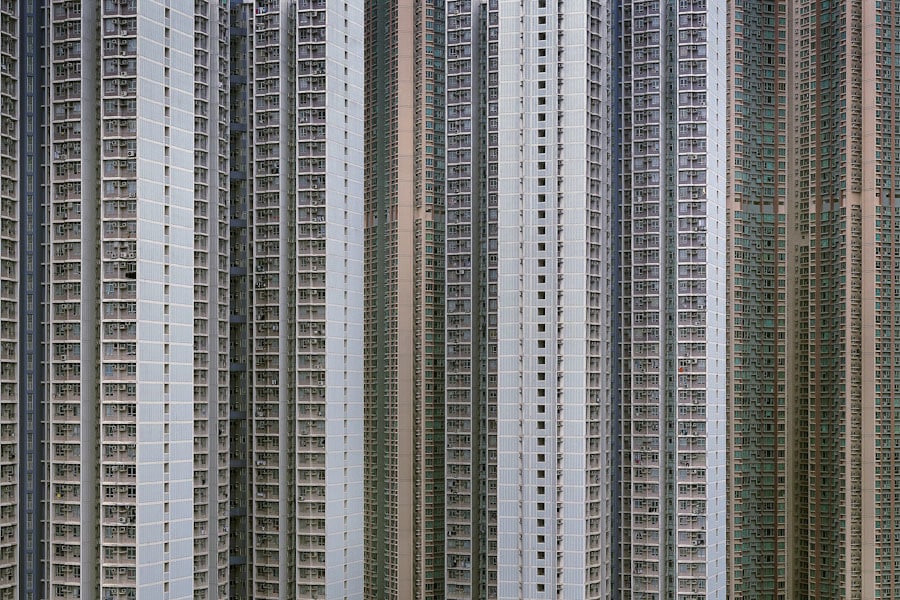
1. Network and legwork to access exclusive locations.
“Finding a vantage point from which you have the view of a building that you’re going for is 90 per cent of the challenge. You can try reaching out months before your shoot to someone who has the ability to get you access. But there has to be an incentive for him or her to help you. It’s a lot of work—you have to talk to 50 different people, and no one is going to do that for someone whom he or she doesn’t know.
“Access opportunities vary by location. In Hong Kong, the housing estates I photographed are built close to the surrounding mountains. I would go on long hikes and look for interesting spots that were close enough to get the image I was after.
“Chicago was very different. Because it’s flat, I had to get on top of buildings and shoot from there. Fortunately, the project was sponsored by someone who was a property manager for quite a few buildings in downtown Chicago. Three or four months beforehand, I sent him a list of buildings I wanted to get onto and he arranged for permissions and a list of phone numbers.
“Paris was the most difficult of the three locations to get the access I needed. I originally wanted the city of Paris to get involved because I knew the project would be a picture of Paris that hadn’t been done before. But since I got no reaction from the city, I could only think of asking my network of friends in Paris if any of their friends lived on their building’s top floor. Unfortunately, even if you get up there, 30 per cent of the time there’s just nothing to photograph. I ended up noticing that every arrondissement in Paris has at least two churches, which each have spires. My wife phoned all the priests, and we were able to get up onto six or seven churches, giving us a 360 degree view. This also had its downside because for this project I only wanted to be up a little higher than rooftop level. In the end, it’s all about contacts and networking.”
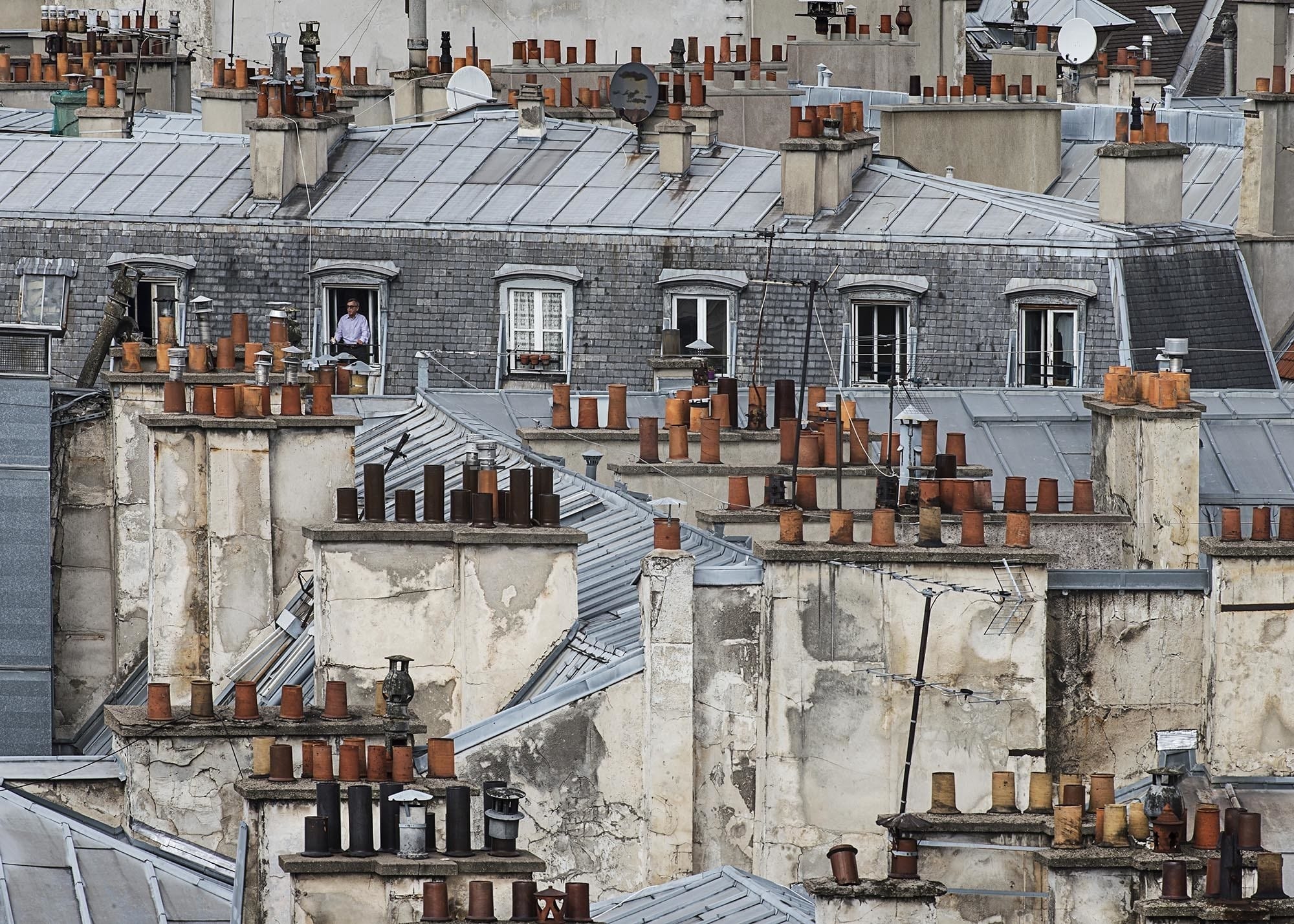
2. Consider your environment.
“For most of my first major series Architecture of Density, I shot with a 4×5 film camera. But when it came to shooting Chicago—which is a very windy city—the slightest gust of wind would vibrate the tripod, and I suspected many of my photographs would be ruined.
“I decided to switch to digital, which saved my life. Now every night I could review the day’s images, and found that 40 per cent of them had vibration problems from wind. Had I kept shooting film, I would have gone back to Hong Kong and realized that half of what I’d done was unusable. This way I could always go up to the roof again and reshoot an important image.”
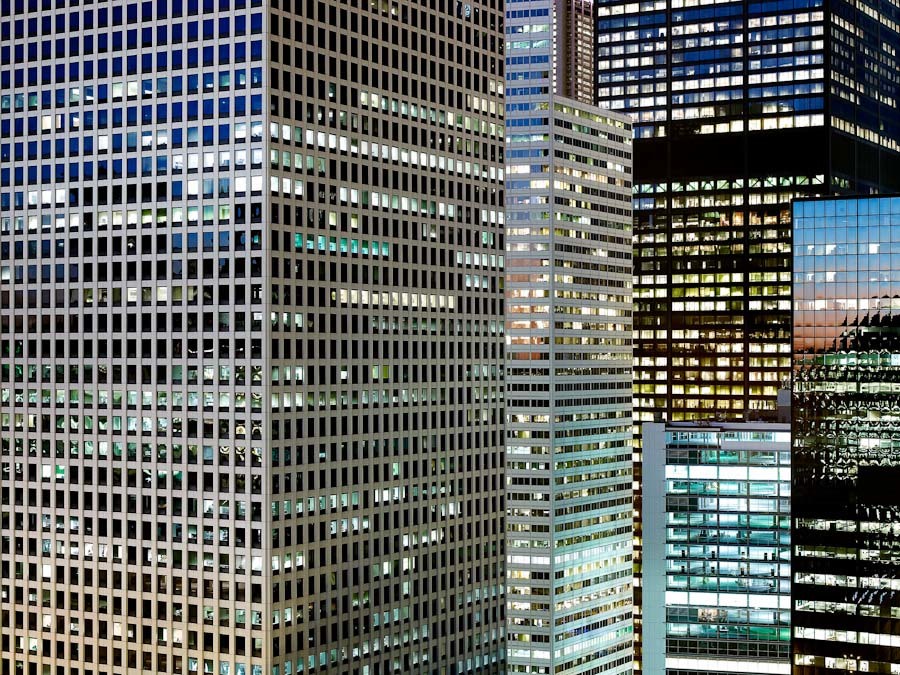
3. Wait for the right time of day.
“I never shoot during sunlight. The dynamic range is much too big, you get no detail in the shadows, and the light is very hard. For Architecture of Density, it was important to be able to look into the meter-wide gaps of the buildings where there’s plumbing. If there’s harsh sun in those gaps, they turn out black and the picture doesn’t reveal as much information as I want.
“In Chicago, I always got up on the roof just before dusk and shot from around 5:30 p.m. to 8:00 p.m. I was interested in this Edward Hopper effect of people working alone in an office, in front of their computer, thinking. I like overcast days, they just make everything a bit softer.”
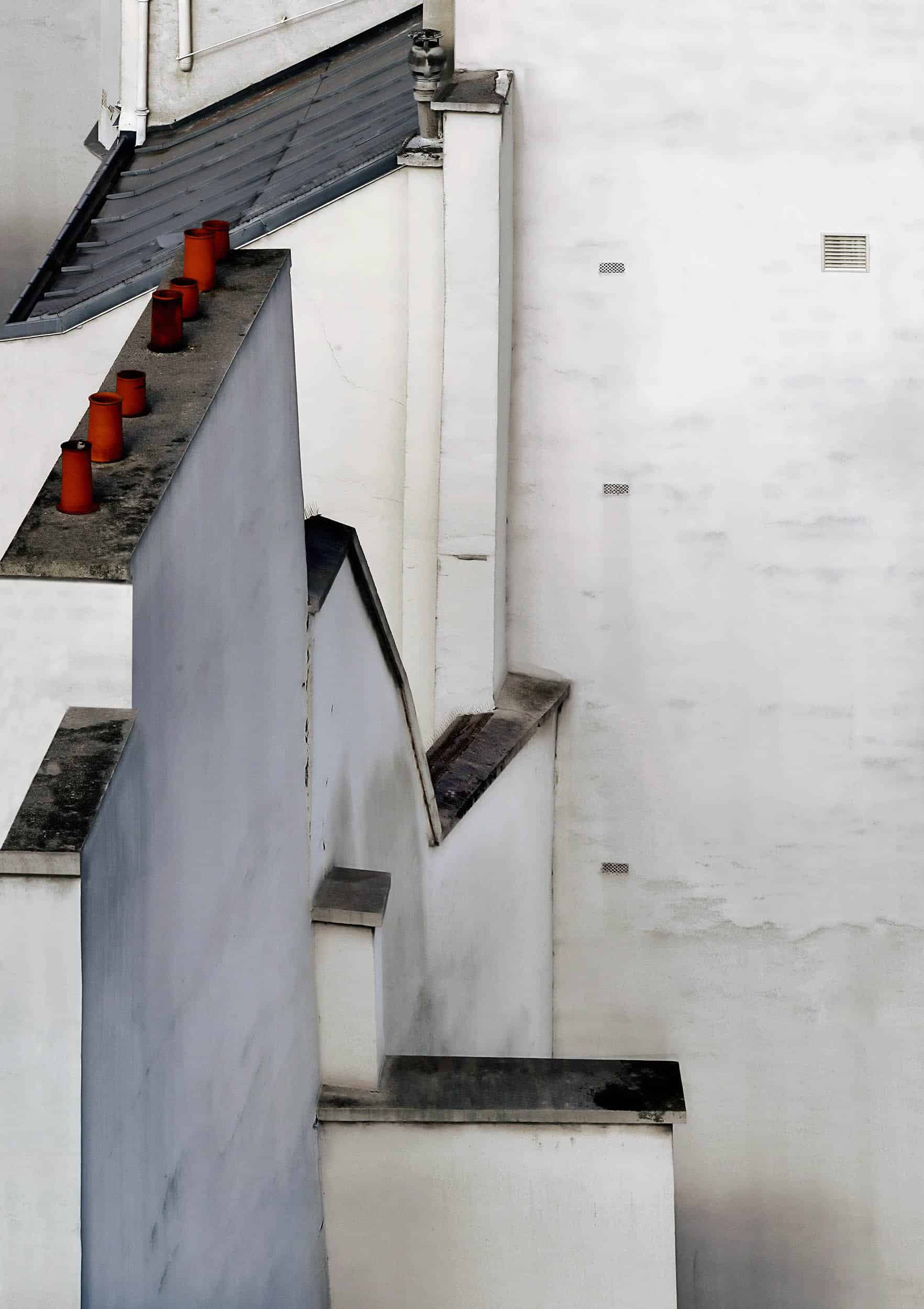
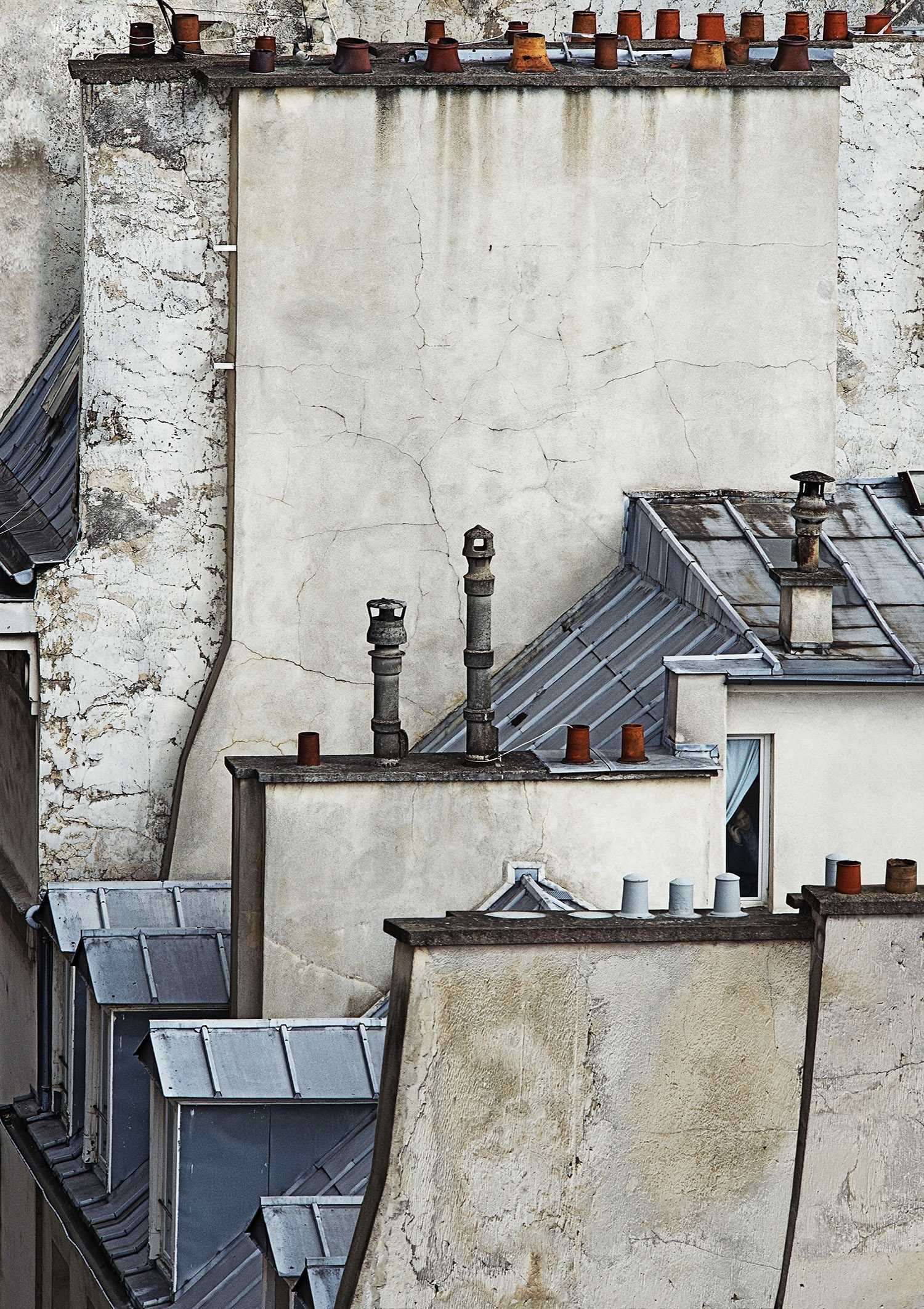
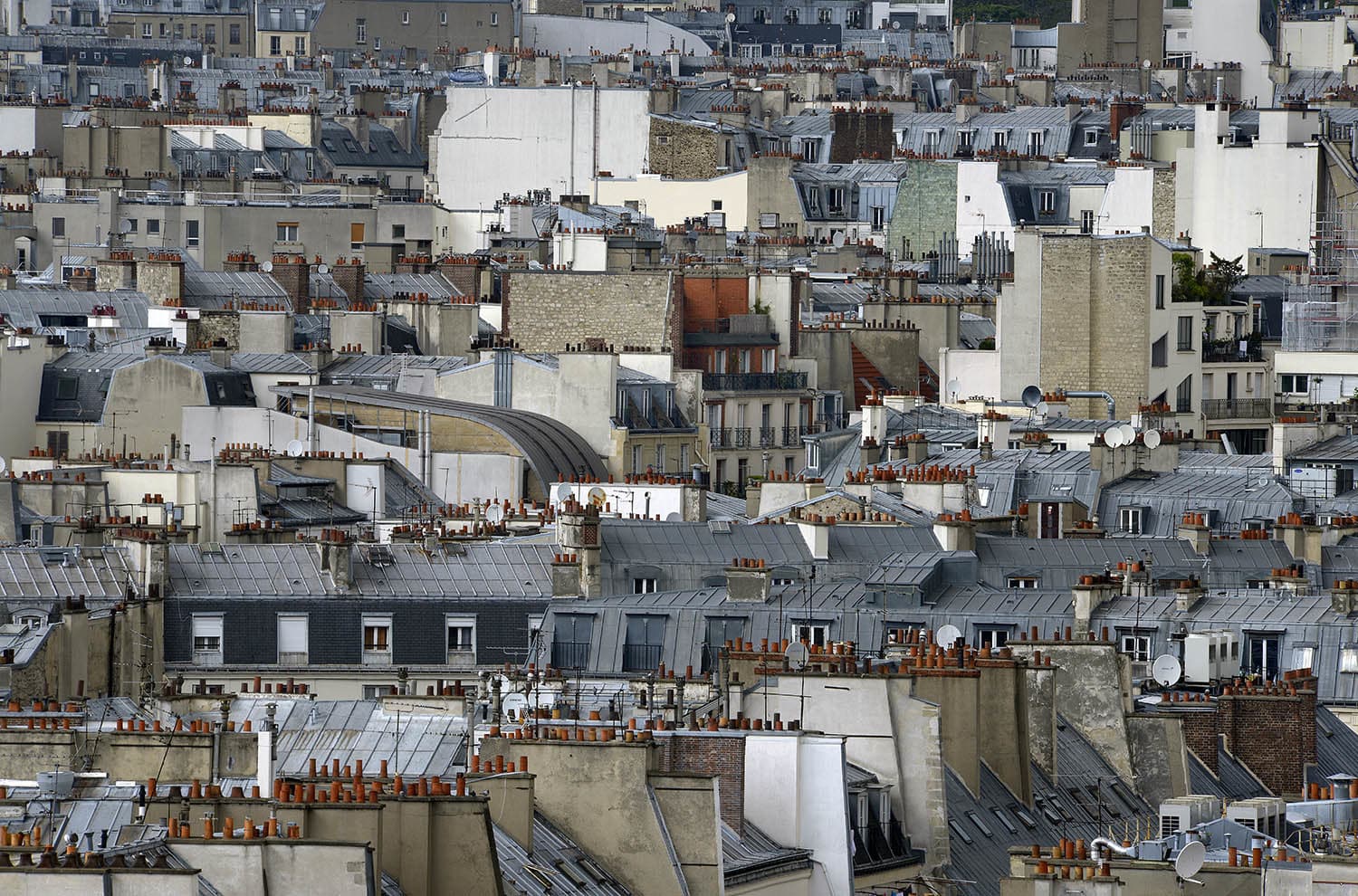
4. Photograph with a concept in mind.
“Yes, it’s about location, but the concept is most important: what you’re trying to communicate. It’s essential to have an idea. A bunch of pretty pictures of buildings might be fun if you’re an amateur photographer, but if you’re trying to do something serious and you want to communicate something, the biggest question is what.
“In all three series, I had fairly clear ideas of what I wanted and how I wanted to do it, and it was just a matter of executing it. For instance, Architecture of Density isn’t really about describing architecture, it’s about the experience of living inside it. If you look at the photographs, each one is cropped so that you don’t see sky or horizon, and this creates an effect of unlimited size.
“When I took them, I would leave a little bit of space so I could crop the images to the precise framing I’d envisioned. The way I cropped them, most of the images end at the top floor of the building. But there could be another 50 floors about that for all you know. If I was trying to describe the buildings themselves, I would have shot them in the documentary style of capturing the whole building.
“Sometimes it’s about refining ideas through editing. At the beginning of Paris Rooftops, I hadn’t fully formed what the project was going to look like. It was in the process of editing that I whittled it down to these chimneys and their structure and geometry—triangles, squares, and the flower pots on top—which I really liked. So, going forward, that’s what I was going for.
“There’s nothing accidental in my photos. The cropping is very important to my vision. There’s always a larger topic involved, not just a simple description of one building and one person. The idea behind these series is that the photos become a metaphor for life in megacities.”
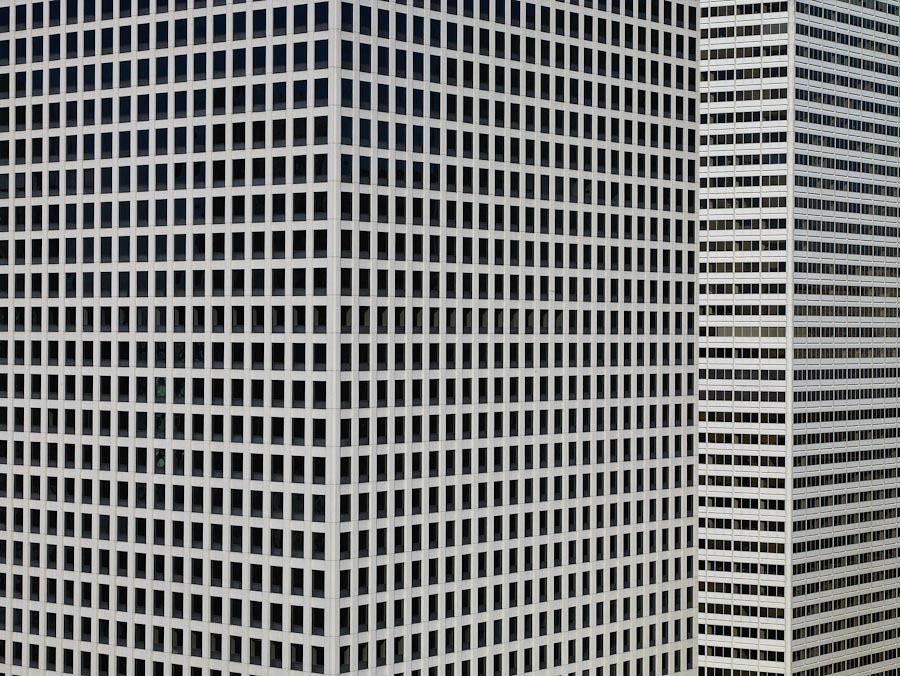
5. Find that balance between art and communication.
“I don’t find it insightful when things are made more complicated than they are. My theory is that people like something that they can understand directly, that they can start thinking about. Anyone who sees my work can understand it. It’s not just for curators and insiders. It’s something that people from all walks of life can connect to. It tells you something, it’s about something, it has a narrative, rather than just being about an idea. I want people to feel it.
“There are other photographers who have a more heavily conceptual practice who do powerful work. I studied as a photojournalist and practiced photojournalism for 25 years. In photojournalism, it’s always about the content, about communicating a message about a people, a country, a person. I transported that over into my artistic practice.”
Michael Wolf’s portfolio
Interested in more about landscape photography? Check out these reads as well.
10 Awesome Landscape Photography Tips
The Best Cameras for Landscape Photography
Here Are The Very Best Landscape Lenses
